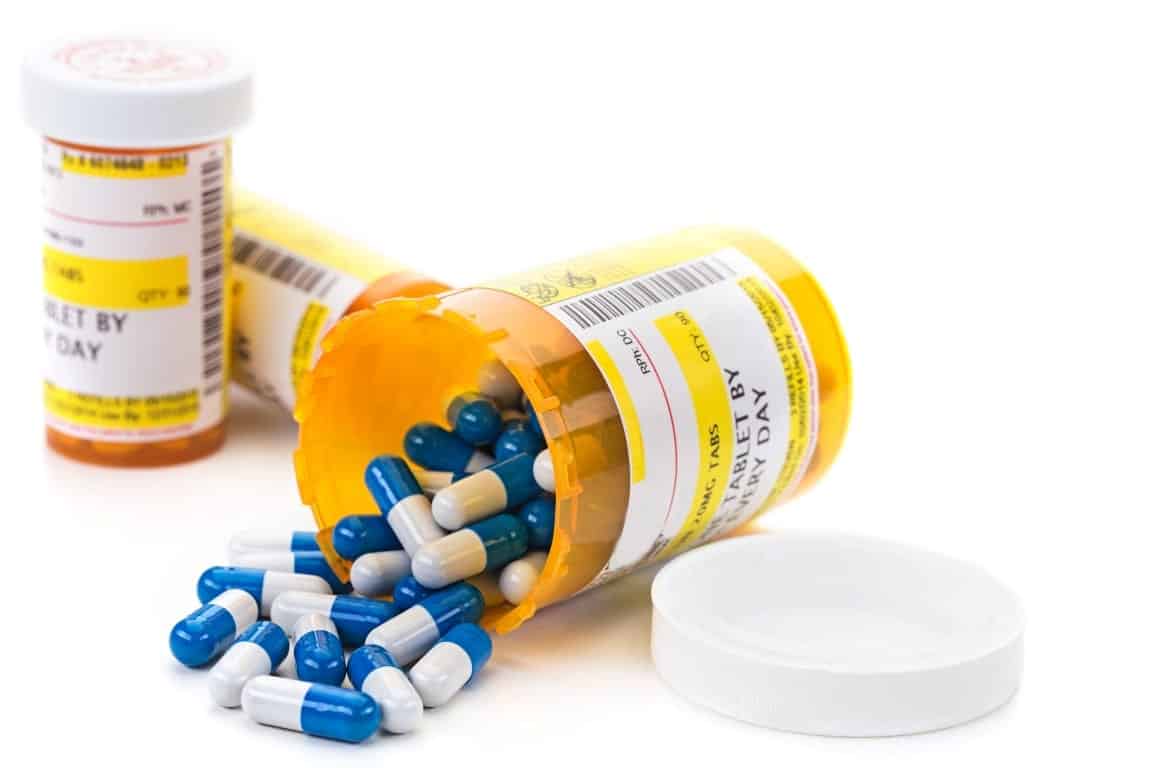Is the DUI arrest of Tiger Woods simply an individual misstep, or is it a warning for the rest of us? The dash-cam video was clear and unmistakable. In the wee hours of Memorial Day morning, Tiger Woods, the most iconic golfer of his generation, was failing every roadside test being given. Woods was confused, slurring his words, and struggling to walk straight or even stand. For lack of a better term, it was a sobering sight.
Arresting Officer: “Woods Was Asleep At The Wheel”
The official arrest report of Officer Fandrey of the Jupiter Police Department, along with the accompanying video footage, establishes everything that happened during the entire incident. Around 3 AM, officers found Woods asleep at the wheel of his freshly-damaged Mercedes-Benz, with the motor still running. On the driver’s side, both tires were flat and both rims were damaged. The driver’s side and rear bumpers also showed signs of recent damage. When the officers woke him, Woods was very groggy and confused. Even though he was in Florida, Woods told the officers that he was in Los Angeles, driving to Orange County. Then he changed his story, admitting that he did not know where he was. Field sobriety tests were given, and Woods failed almost everyone – miserably. As a result, he was arrested and charged with Driving under the Influence. When questioned by the arresting officer, Woods stated that he “100%” had not had anything alcoholic to drink. He was telling the truth. The report states that he was given two breathalyzer tests, and he blew 0.00 each time.
Police Report: “Takes Several Prescriptions”
Woods admitted to the officers at the scene that he takes several medications. In April, Woods had surgery on his ailing back – his fourth in the past three years. In and of itself, the number of prescriptions is not a cause for concern. Woods’ struggles with back injuries are well-documented, and with such recent surgery, he is still in physical recovery. Reportedly, he will not be able to twist his back for several more months. But let’s take a closer look at the four medications Tiger Woods admitted to taking, listed on the official police report as “medical conditions”.
Medication #1: Vicodin (Opioid)
Vicodin is the brand name for a pain-killing medication that combines the opioid hydrocodone with Tylenol. It is typically prescribed for moderate-to-severe pain, such as the pain suffered after surgery or sports injuries. All opioids can cause pleasurable feelings in the user, such as a heightened sense of well-being and decreased feelings of stress or worry. Consequently, Vicodin is a popular drug of abuse. In fact, it is the prescription opioid that is second-most frequently found present in drug evidence. Vicodin is so addictive because it binds to specific receptors within the brain, disrupting the normal production of dopamine, the neurotransmitter associated with reward and motivation. When the drug is taken, it triggers an artificial surge of dopamine, resulting in an opioid “high”. But over time, the use or abuse of Vicodin causes the brain to decrease or even stop the natural production of dopamine. As a result, the person loses the ability to experience pleasure or even feel normal without the presence of the drug. When use is discontinued, they experience harshly-unpleasant symptoms of withdrawal. Withdrawal is the brain’s way of compelling further substance use. This is the nature of addiction. But addiction is not the only danger associated with opioids. Even as directed, painkillers such as Vicodin have serious side effects, affecting both a person’s physical and mental state. Of special relevance to the Tiger Woods DUI, some of the most common are:
- Dizziness
- Lightheadedness
- Sedation
And, when a person takes more than is recommended – intentionally or not – hydrocodone produces extreme sleepiness. This is why patients are cautioned not to drive after taking Vicodin. Vicodin’s effects are MAGNIFIED when it is combined with other opioids, antidepressants, or sedatives.
Medication #2: Turox (anti-inflammatory)
(misspelled as “Torix” on the police report) Turox is the brand name for etoricoxib, an anti-inflammatory pain relief drug that is not approved for use in the United States. Fatigue is among the possible side effects. The presence of this prescription demonstrates a willingness on Woods’ part to circumvent existing FDA guidelines. The Turox brand is available in the United Arab Emirates.
Medication #3: Xanax (antidepressant)
(misspelled as “soloxex” on the police report) Xanax is the brand name for alprazolam, a benzodiazepine medication used to treat anxiety, panic, and sleep disorders. Woods has a reported history of using sleep aids, specifically Ambien. Xanax is the most prescribed AND the most-misused “benzo” drug in the United States. Significantly, when Xanax is taken with Vicodin, the result can be difficulty concentrating, confusion, dizziness, and drowsiness.
Medication #4: Vioxx (anti-inflammatory)
(misspelled as “viox” on the police report) Vioxx is the brand name for rofecoxib, an NSAID medication used to treat patients in chronic pain. What is interesting to note is that Woods told the police officers that he had not taken Vioxx “this year”. Vioxx was withdrawn from the market in 2004, over a decade and a half ago.
“Unexpected Reaction to Prescription Medications” – Abuse, Accident, or Irresponsibility?
There are three main possibilities as to what happened that morning. FIRST – Was Tiger Woods abusing drugs that night? There is no evidence beyond speculation that Tiger Woods has a substance abuse problem. As he stated, he had not been drinking, and the Vicodin he admitted to taking was prescribed for actual recent surgery. As a professional athlete, Woods has been drug-tested multiple times during his career. He has never failed a drug test. However, in 2009, the British publication, The Daily Telegraph reported that Woods was admitted to the hospital as a “possible overdose”. Reportedly, his wife at the time, Elin Nordegren, handed the doctors two empty pill bottles that had once contained Ambien and Vicodin. Immediately prior, in 2008, Woods underwent multiple knee surgeries. In fact, Woods has had four back surgeries in the past three years, often expressing his constant pain. Reasonably assuming that he was prescribed opioids for postoperative and/or chronic pain, is it possible that a dependence developed? In 2016, the FDA issued new guidelines about how opioids should be prescribed. Specifically, doctors told to limit the length and dosage of painkiller prescriptions. SECOND – Was the medication reaction a legitimate accident? There are several reasons why this might be the case. Since a Vicodin/Xanax combination can result in extreme sedation, it would explain Woods’ behavior– the grogginess, sleepiness, and confusion. If he was not made fully aware of the possible interactions between the drugs by his doctor or pharmacist, then even taking his medications precisely as prescribed would produce the same results. Other possible factors:
- Taking the medications on an empty stomach
- Becoming confused due to the medications’ side effects and unintentionally taking another dose
THIRD– Was Tiger Woods irresponsible with the way he took his medications? If this is what happened, then Tiger Woods is guilty of being just like everyone else. Most people try to take their medicine exactly as prescribed, but human error and human nature sometimes gets in the way:
- Not reading or paying attention to instructions and/or contraindications
- Accidentally missing a dose and then “catching up”
- Taking more than recommended, because of pain
- Taking the next dose a little early
- Misjudging the medications’ effects and attempting to drive
What Can We Learn from Tiger Woods and His DUI Arrest?
Whatever the true story behind what happened, it highlights the dangers of prescription opioids. Whether used correctly or abused recreationally, painkillers carry serious hazards. What happened that Memorial Day morning could easily happen to anyone who has ever been prescribed an opioid or an antidepressant. And, considering that in 2012, there were enough opioid prescriptions written to give every American adult their own personal bottle of pain pills, that’s a lot of us. When you consider that roughly 1 out of every 10 Americans take benzodiazepines, you realize that that’s even more of us. In a very real and scary sense, we could ALL be Tiger Woods.
Sources:
http: //www.tmz.com/2017/05/30/tiger-woods-dui-police-report-car-crash-damage/ https://www.tmz.com/2017/05/30/tiger-woods-dui-arrest-drugs-field-sobriety-police-report/ https://tmz.vo.llnwd.net/o28/newsdesk/tmz_documents/tiger-woods-doc.pdf https://www.businessinsider.com/tiger-woods-drugs-torix-soloxex-vicodin-2017-5 https://time.com/4797412/tiger-woods-dui-arrest-medication/ https://www.fda.gov/ICECI/EnforcementActions/WarningLetters/2016/ucm483374.htm https://hypothyroidmom.com/is-your-chronic-pain-related-to-your-thyroid-health/ https://www.fda.gov/Drugs/DrugSafety/PostmarketDrugSafetyInformationforPatientsandProviders/ucm106290.htm https://www.telegraph.co.uk/sport/golf/tigerwoods/6764344/Tiger-Woods-continues-his-descent-with-drug-overdose-suspicions.html https://www.asam.org/docs/default-source/advocacy/opioid-addiction-disease-facts-figures.pdf https://www.usatoday.com/story/sports/golf/2017/06/10/tiger-woods-told-officers-during-arrest-he-had-taken-xanax/102699298/






